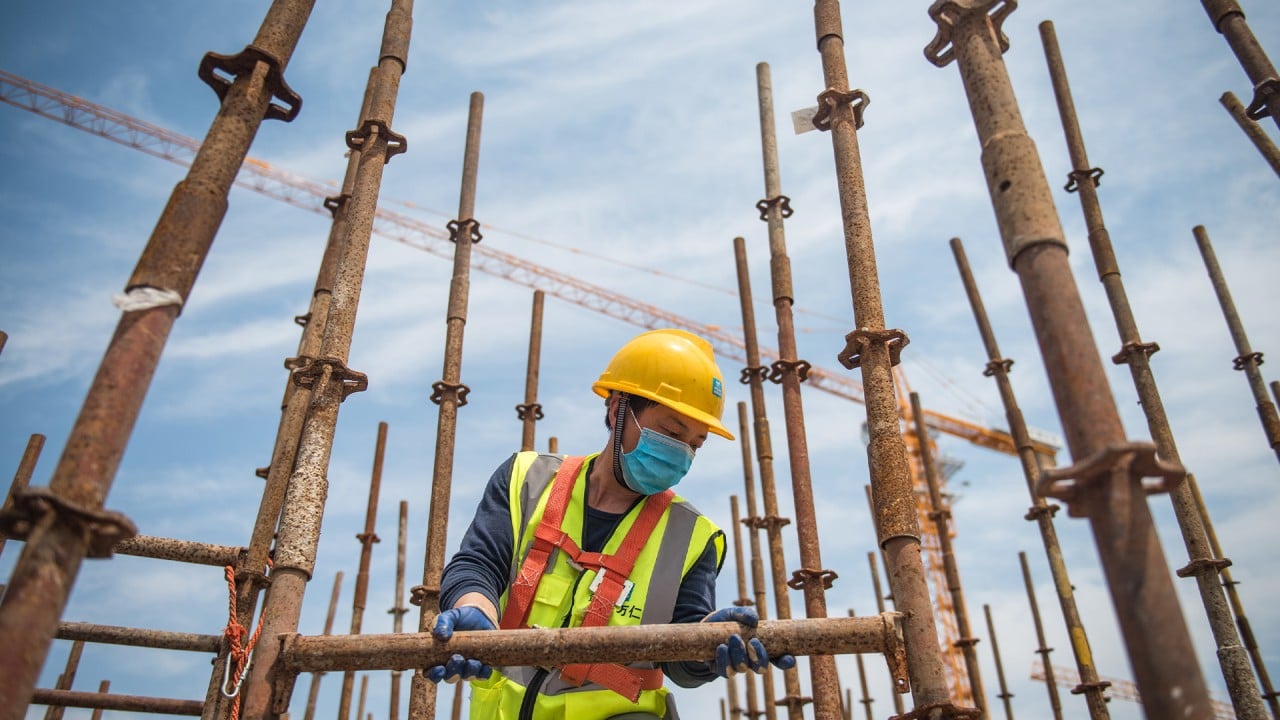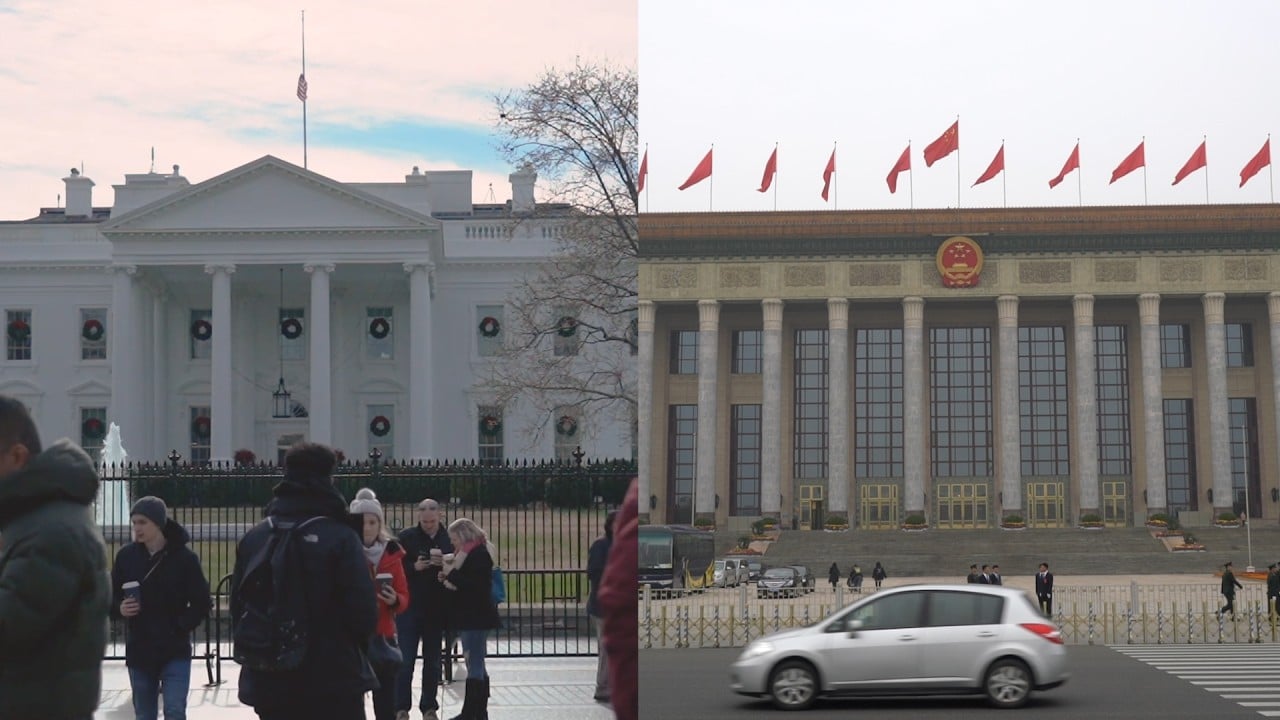
China’s five-year plan to focus on independence as US decoupling threat grows
- Top officials in Beijing are drafting the 14th five-year plan, which will set out key economic and political goals for 2021 to 2025
- China is expected to rely more on its domestic economy to ease its reliance on the US in the post-coronavirus world
This is the last in a series of stories examining the issues that Chinese leaders face as they gather for their annual “two sessions” of the National People’s Congress and Chinese People’s Political Consultative Conference this week. This instalment looks at how China’s 14th five-year plan will shape its economic and political direction between 2021 and 2025.
How can China survive and thrive in the face of US hostility? What does it need to take development to the next stage? And where should Beijing focus its resources to turn the Chinese dream into a reality?
These are the big questions Chinese officials and researchers are deliberating as the nation begins drafting its new five-year plan, which will set out key economic and political goals for the period 2021 to 2025.
With China and the United States increasingly at odds, the new policy blueprint is likely to reflect a shift in the way Beijing conducts itself in what is perceived to be an increasingly adversarial international system, according to Chinese researchers who are involved in preparations for the new plan.
While the final version of the 14th five-year plan will not be made public until March 2021, preliminary research and discussions show that China will seek more autonomous development by cutting reliance on the US for technology supply and exports.

05:02
Coronavirus backlash further fraying China’s ties to global economy
The coronavirus pandemic has had a “profound impact on the international economy, politics and security”, according to Xie Fuzhan, the head of the Chinese Academy of Social Sciences (CASS), a government think-tank in Beijing that is involved in devising the new plan.
While not naming the US directly, Xie said “a few rich countries” have tried to avoid responsibility and blame others for their own problems, with “their unilateralist and protectionist policies putting the global economy at growing risk of disintegration.”
CASS said in a preliminary study this month that the global economy’s growth dynamics “released by neo-liberal economic policies” were running dry, and economic problems – from inequality in rich countries to imbalances in the flows of capital – was creating international friction.
China now has a middle income group of between 500 and 700 million people, and that alone can be a source to power Chinese economic growth for the next five years
With the world set to witness changes unlike anything in “the last 100 years”, China’s centralised governance system, led by the Communist Party, was advantageous, and so was its complete manufacturing system and a vast domestic market, according to a CASS research team led by Huang Qunhui.
“China now has a middle income group of between 500 and 700 million people, and that alone can be a source to power Chinese economic growth for the next five years,” the state researchers wrote.
The idea that China could rely more on itself for development was endorsed in the most recent 25-member Politburo meeting by President Xi Jinping, who could lead China well beyond 2025.
Xi said China would use a “new development pattern” consisting of “both the great domestic economic circle and the international economic circle”, instead of relying solely foreign markets.

02:06
Coronavirus pandemic creates ‘new Cold War’ as US-China relations sink to lowest point in decades
While China will not give up on the international market, it will increasingly tilt its manufacturing might to meet the demands of its huge domestic market.
Another key area where China will seeka “breakthrough” in the next five-year plan is technology.
Washington’s targeting of Huawei Technologies, the Chinese telecommunications giant, and restrictions on hi-tech exports to China, have stirred soul-searching in Beijing on how it can reduce dependence on imported technologies.
Xi compared the restriction on hi-tech exports to China to putting a hand around the country’s throat.
China would leverage its “whole-country system” to strengthen technological innovation and solve bottlenecks, indicating greater investment for cutting-edge sectors of the economy.
China’s state-led plans to lift manufacturing up the value chain, particularly its “Made in China 2025” industrial strategy, have long been subject to complaints from Washington and Brussels. But the country’s overall research and development (R&D) spending is actually falling.
China’s R&D expenditure, which measures innovation input intensity, was only 2.19 per cent of national gross domestic product last year, compared to a 2020 target of 2.5 per cent, official data showed.
It is one of the few areas in which China has failed to reach its targets.
Five-year plans were first used by the Soviet Union, laying down fairly blunt guidelines for industrial and agricultural development. But China’s versions have evolved into a sophisticated policy blueprint, including dozens of quantified social and economic indicators.
China’s planning system has prioritised economic growth since 1981, though it has expanded to include things like environmental targets, efficiency and social welfare goals.
The national plan forms the basis for hundreds of mini five-year plans used by provinces, cities and industries, keeping the whole country’s development priorities on the same page.
After the Soviet Union collapsed in 1991, China is the only major economy still using five-year planning to guide its socialist-market economy.

05:59
Coronavirus: What’s going to happen to China’s economy?
A “midterm” review in 2018 found that four targets were late, including R&D expenditures and water quality.
The coronavirus outbreak, however, has put the most important targets, namely doubling in the size of the economy from 2010 to 2020, at risk.
The country suffered a 6.8 per cent economic contraction in the first quarter, all but scuttling any hope of meeting the minimum 6.5 per cent annual growth target for per capita income.
What you need are institutional reforms that allow the Chinese people to become more productive
Ding Shuang, an economist at Standard Chartered Bank, said the target of doubling the size of the economy has significant political implications, as it is a yardstick for measuring whether Beijing has delivered on promises to the people.
The likely postponement in realising the goal, due to the black swan event of the coronavirus, would push Beijing to set less rigid targets in future plans.
Michael Pettis, a professor of finance at Peking University’s Guanghua school of management, said centralised planning “won’t work well as the Chinese economy has already reached a certain level of maturity”.
“What you need are institutional reforms that allow the Chinese people to become more productive … You need every business-person to make his own plans.”
The other stories in the series include: how Beijing is preparing for a post-Covid-19 world; how it is likely to ignore calls to investigate the coronavirus; the expectations for Beijing’s policy on Hong Kong; the expectations for China’s new military budget; the sharp decline of US-China ties; and China’s changing role in the global economy.










